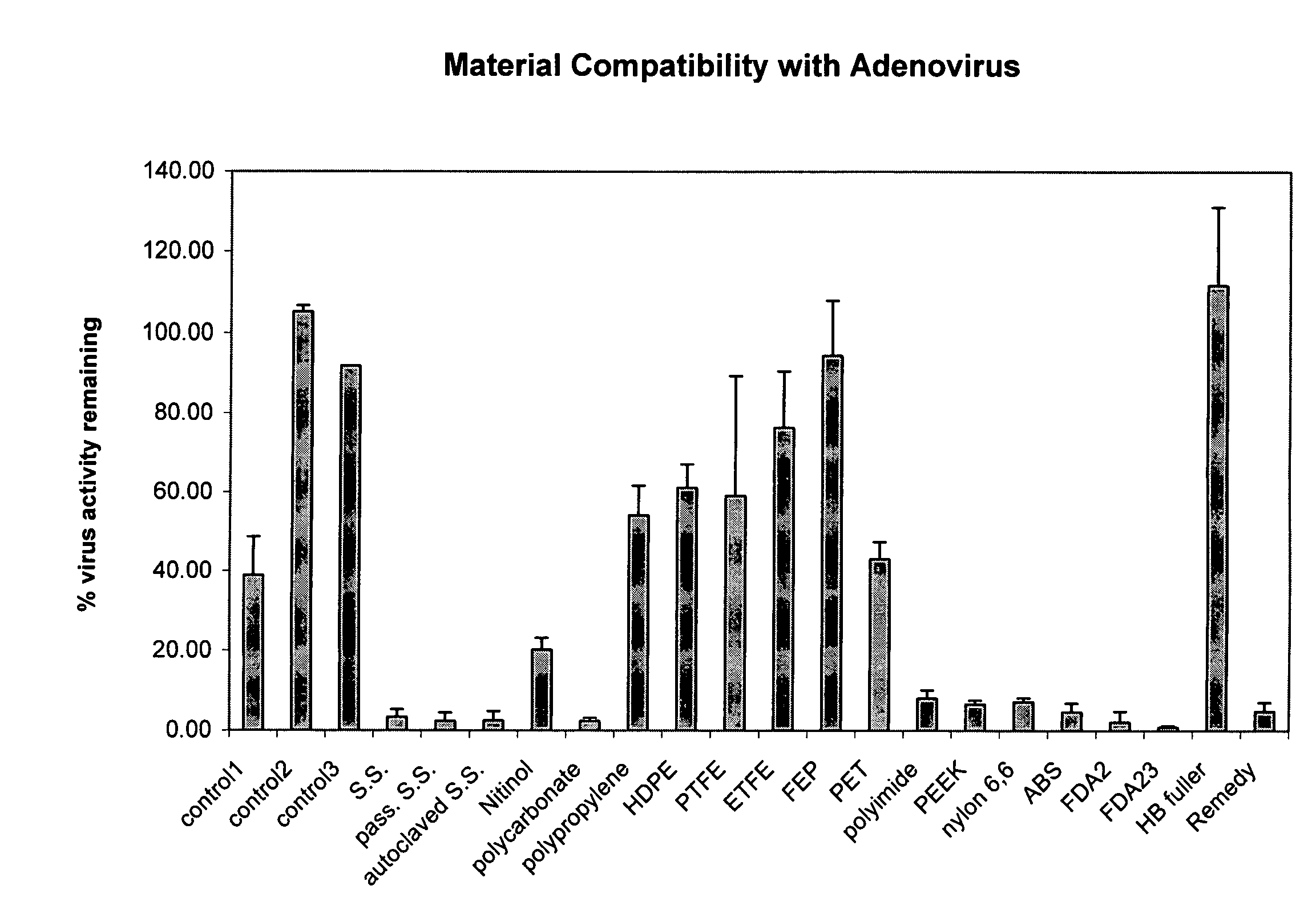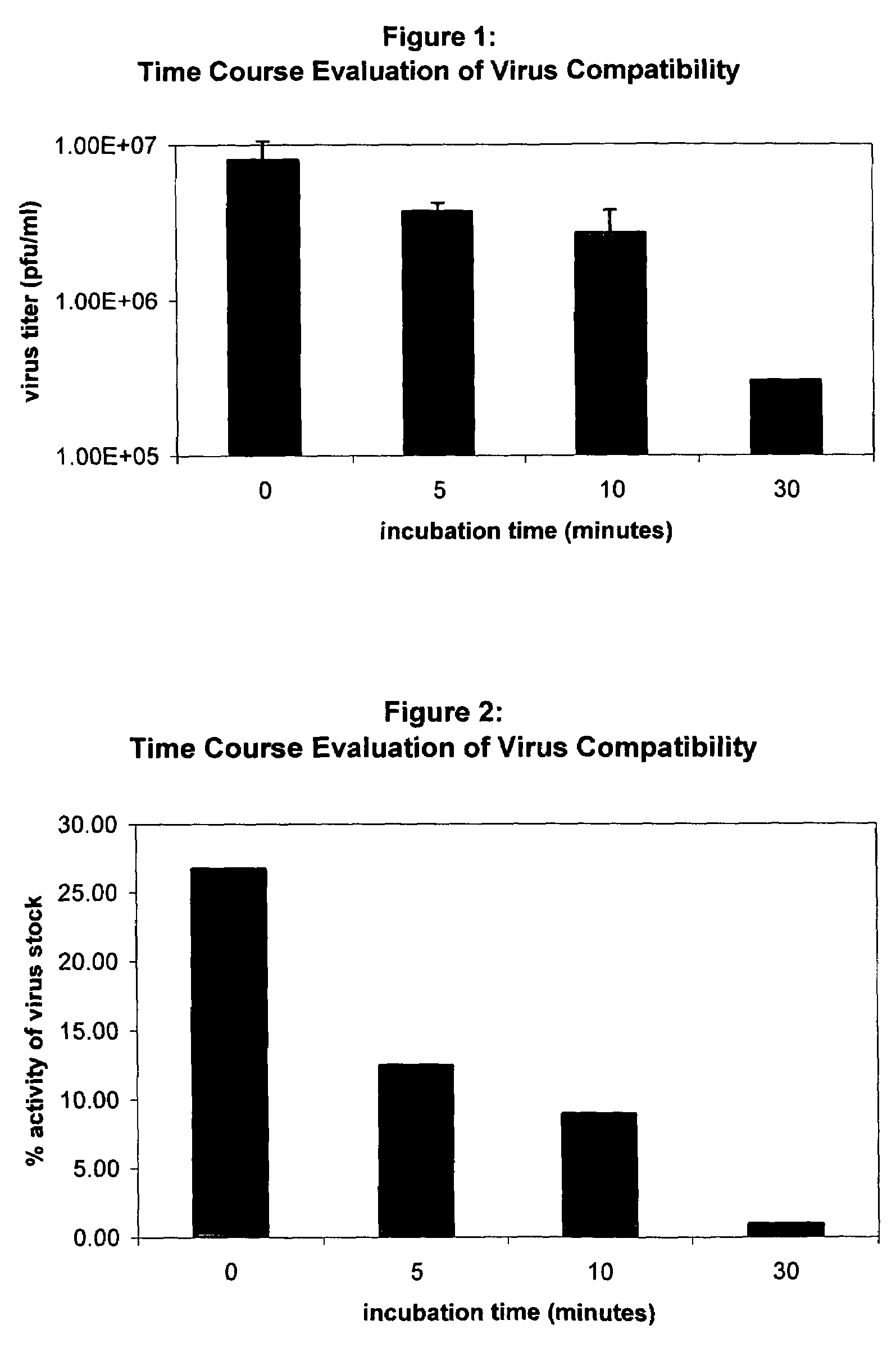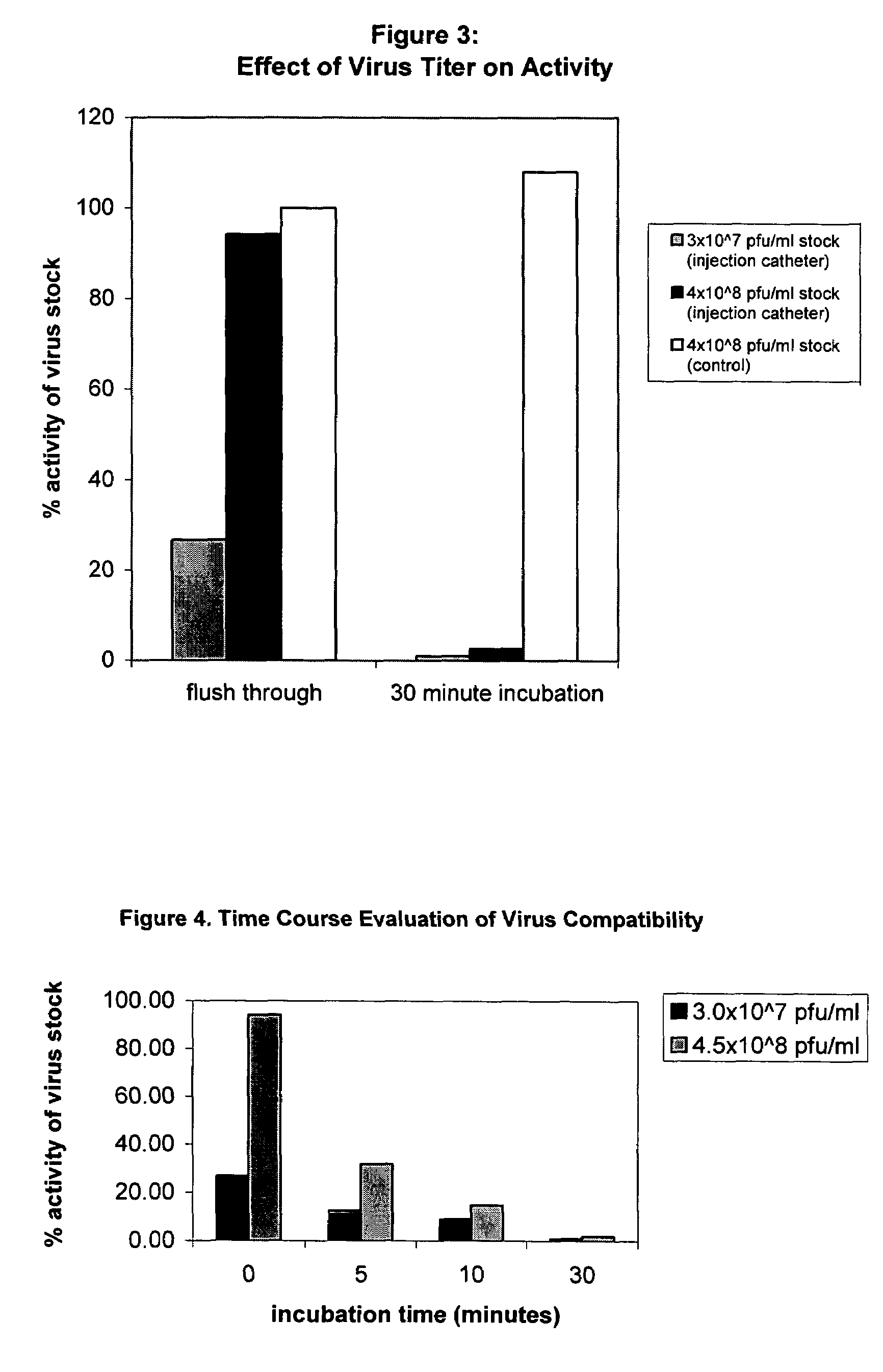Biocompatible pharmaceutical articles
a biocompatible and pharmaceutical technology, applied in the field of pharmaceutical articles, can solve the problem that materials can be relatively incompatible with certain pharmaceutically active materials, and achieve the effects of measuring the pharmaceutical effectiveness of a virus, reducing the risk of infection, and improving the safety of patients
- Summary
- Abstract
- Description
- Claims
- Application Information
AI Technical Summary
Benefits of technology
Problems solved by technology
Method used
Image
Examples
example 1
Time Course Evaluation of Virus Compatibility
[0094]A CMV-β-gal adenovirus (i.e., an adenoviral vector driven by a CMV (cytomegalovirus) promoter and encoding a β-galactosidase (β-gal) reporter gene) was used as a stock virus in this example.
[0095]Stock virus having a viral titer of 3×107 (also referred to herein as 3×10^7 or 3E+07) infectious units / ml (IU / ml) (also referred to herein as pfu / ml) was incubated in catheters at 37° C. The catheters used were endocardial catheters like those described in international patent application WO / 9922655, the disclosure of which is hereby incorporated by reference in its entirety. These catheters have a proximal portion formed from heat-treated stainless steel and a distal portion formed from a nitinol hypotube (referred to in these examples as “catheter” or “injection catheter” or “needle injection catheter”); the hub is comprised of polycarbonate. After the allotted amount of time (0–30 minutes, where 0 minutes refers to the situation in whic...
example 2
Time Course Evaluation of Virus Compatibility
[0099]Procedures similar to Example 1 were followed, except that an additional initial viral titer (4E+08 IU / ml) was examined, both in a catheter and as a control. For the control, the virus was exposed to a polypropylene vial for the appropriate period.
[0100]The number of positive cells was counted: (1) after 0 (flush through) and 30 minutes in the control vial (4E+08 IU / ml), (2) after 0 (flush through) and 30 minutes in the catheter, using the same stock virus titer as the control (4E+08 IU / ml), and (3) after 0 (flush through) and 30 minutes in the catheter, using a lower stock virus titer (3E+07 IU / ml).
[0101]Data are presented in FIG. 3, which presents these data as a percentage of viral stock titer. As in Example 1, there is a significant drop in virus activity as a function of incubation time. For a virus stock titer of 3E+07 IU / ml, a flush through resulted in a 75% loss of activity relative to the viral stock while a 30-minute incub...
example 3
Time Course Evaluation
[0102]Procedures similar to Examples 1 and 2 were followed for viral solutions having titers of 3.OE+7 IU / ml and 4.5E+8 IU / ml. Positive cells were counted after 0 (flush through), 5, 10 and 30 minutes in the catheter. Data are presented in FIG. 4, which shows a more pronounced drop in activity for the lower concentration over shorter incubation times. This difference, however, becomes less significant at longer incubation times, as also seen in Example 2.
PUM
| Property | Measurement | Unit |
|---|---|---|
| thicknesses | aaaaa | aaaaa |
| thicknesses | aaaaa | aaaaa |
| volumes | aaaaa | aaaaa |
Abstract
Description
Claims
Application Information
 Login to View More
Login to View More - R&D
- Intellectual Property
- Life Sciences
- Materials
- Tech Scout
- Unparalleled Data Quality
- Higher Quality Content
- 60% Fewer Hallucinations
Browse by: Latest US Patents, China's latest patents, Technical Efficacy Thesaurus, Application Domain, Technology Topic, Popular Technical Reports.
© 2025 PatSnap. All rights reserved.Legal|Privacy policy|Modern Slavery Act Transparency Statement|Sitemap|About US| Contact US: help@patsnap.com



